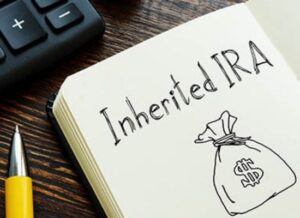The individual alternative minimum tax (AMT) rules were made more taxpayer-friendly for 2018 through 2025 by the Tax Cuts and Jobs Act (TCJA). The odds that you’ll owe the AMT for those years have been significantly reduced — and, if you still owe the AMT, you’ll probably owe less than under prior law.
Are you at risk for this dreaded tax? Various factors make it difficult to pinpoint exactly who will be hit by the AMT. Here’s a summary of common risk factors under the current version of the AMT rules.
Substantial Income
When you have high income, it can cause your AMT exemption to be partially or completely phased out. This increases the likelihood that you’ll owe the AMT. The TCJA increased both the exemption amounts and the income levels where they begin to be phased out for 2018 through 2025. (See “Refresher on Today’s AMT Rules,” below.)
However, the fact that the TCJA lowered five out of the seven regular tax rates while leaving AMT rates at 26% and 28% increases the odds of owing the AMT. The offsetting factor is the TCJA’s liberalized AMT exemption rules. The interplay of these two factors may keep some upper-income taxpayers on the hook, but they’ll probably owe less than before the TCJA.
Itemized SALT Deductions
If you itemize, you could fully deduct state and local taxes (SALT) under the pre-TCJA regular tax rules. But you’ve never been able to deduct them under the AMT rules.
For 2018 through 2025, the TCJA limits your regular tax itemized deduction for state and local income and property taxes combined to $10,000 ($5,000 if you use married filing separate status). So, for 2018 through 2025, this AMT risk factor is reduced, because allowable itemized deductions for state and local taxes are so limited.
Personal and Dependent Exemption Deductions
These deductions have always been completely disallowed under the AMT rules. However, for 2018 through 2025, personal and dependent exemption deductions are suspended by the TCJA. So, for now, this AMT risk factor is gone.
Exercise of In-the-Money ISOs
Exercising an in-the-money incentive stock option (ISO) has federal income tax consequences. The so-called “bargain element” (the difference between the shares’ market value on the exercise date and your ISO exercise price) doesn’t count as income under the regular tax rules. But it does count as income under the AMT rules. This AMT risk factor still exists under current law.
Home Equity Loan Interest Deduction
Before the TCJA, you could deduct the interest on up to $100,000 of home equity loan balances. But under the AMT rules, you could deduct that interest only to the extent the loan proceeds were used to buy or improve your first or second home. For 2018 through 2025, the new law generally disallows itemized deductions for home equity loan interest.
However, in some cases, you may be able to treat a home equity loan as generating deductible qualified residence interest if:
You used the loan proceeds to acquire or improve your first or second residence, and
Your total mortgage debt, including home equity loans, doesn’t exceed $750,000 ($375,000 if you use married filing separate status).
In such cases, you can deduct the interest under both the regular tax and AMT rules. Unfortunately, interest on home equity loans that don’t pass this test is disallowed for regular tax purposes under the TCJA. So, this AMT risk factor has lost its teeth in many cases.
Standard Deduction
Standard deductions allowed under the regular tax rules have always been completely disallowed under the AMT rules. For 2018 through 2015, the TCJA greatly increased the standard deduction amounts, but they’re still disallowed under the AMT rules. So, the TCJA actually increased this AMT risk factor.
Depreciation Deductions
Regular tax depreciation deductions from businesses and investments in “pass-through entities” (including S corporations, limited liability companies and partnerships) can create AMT adjustments. These may increase your AMT income — and the odds of owing the AMT.
Under the TCJA, for qualifying depreciable assets placed in service between September 28, 2017, and December 31, 2022, businesses can deduct the entire cost in the first year under both the regular tax rules and the AMT rules. For now, this AMT risk factor is greatly reduced for newly acquired assets. However, it still exists for older assets that are being depreciated under the pre-TCJA rules.
Private Activity Bond Interest Income
This category of interest income is tax-free for regular tax purposes. But it’s taxable under the AMT rules. There haven’t been any changes to the treatment of this category of income. So, the risk factor still exists.
Minimum Tax Credits
A portion of your AMT liability can potentially generate the “minimum tax credit.” If it does, you can carry this credit forward to future tax years and use it to reduce your regular tax liability to the point where it equals your AMT liability.
Minimum tax credits are generated only by AMT liabilities that are attributable to “deferral preferences.” These items are recognized at different times for regular tax purposes and AMT purposes — for example, certain depreciation deductions.
AMT liabilities that are attributable to “exclusion preferences” (items permanently treated differently under the regular tax and AMT rules) don’t generate minimum tax credits. Exclusion preferences include:
- Itemized deductions that are disallowed under the AMT rules, such as SALT,
- Home equity loan interest deductions if the loan proceeds weren’t spent on a first or second residence,
- Standard deductions, and
- Tax-exempt interest from certain private-activity bonds.
Most other AMT adjustments and preferences are deferral preferences that will potentially generate minimum tax credits. For instance, AMT depreciation adjustments and the bargain element from exercising an ISO are examples of deferral preferences.
Important: These credits are calculated on IRS Form 8801, “Credit for Prior Year Minimum Tax — Individuals, Estates, and Trusts.” Specifically, you prepare Form 8801 for the year after the year you pay the AMT to calculate the minimum tax credit that was generated in the preceding year. You then file Form 8801 with your Form 1040 for the later year.
For More Information
The TCJA significantly reduces the odds that you’ll owe the AMT for 2018 through 2025. But you could still be the AMT danger zone, especially if you have some of the risk factors listed above. Failure to recognize AMT liability could result in back taxes, interest and penalties.
Please contact Joseph Wilson for more information via our online contact form.
Councilor, Buchanan & Mitchell (CBM) is a professional services firm delivering tax, accounting and business advisory expertise throughout the Mid-Atlantic region from offices in Bethesda, MD and Washington, DC.




